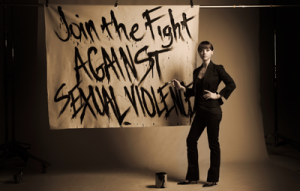While researching for the previous blogs I have come across an excessive amount of information over sexual assault in which college campuses account for several of these experience and must be examined further....
College Campuses:
Unfortunately, college campuses are extremely popular for sexual assaults. From the website Best Colleges, the article The Realities of Sexual Assault on College Campuses reveals startling information that brings awareness to college student's abuse. The White House Task Force to Protect Students inform that 1 in 5 female college students will experience an assault during their college years, with 95% of assaults being unreported (The Realities of Campuses).
The Abuse:
College campuses allow for an open environment in which students engage themselves in casual, intimate and serious relationships with other students. In many cases, these young students find themselves in not only sexual abuse, but emotional and verbal abuse from these relationships as well. From the National Center on Domestic and Sexual Violence express that over 40% of women experience the following form of behavior while dating:
(The Realities of Campuses).
Prevention/Advice:
It's important for students to be aware of their surroundings, especially when out at social events and gatherings. The Realities of Campuses suggest the following:
- know your alcohol limits
- watch your drink
- trust your gut
- stay close to friends
From Cengage Brainaic, the article Sexual Assault on College Campuses suggest:
- don't accept a drink from anyone
- use the buddy system
- use your phone
- report to authorities
Not Alone Project
Supported by President Obama and Vice President Biden, the Not Alone Project aims to provide security and awarding justice to the students who have endured a sexual assault on a college campus. The project encourages victims to speak out about their assault, in which the appropriate treatment and services will be provided.
CNN recently discussed a survey that has acknowledge the progression of sexual assault on
college campuses. The article reveals that more than 150,000 students participated in this survey, composed of over 27 universities including Iowa State University, University of Florida, California Institute of Technology, and all Ivy League schools, except Princeton. The findings overall conclude that 26% of seniors reported assault at some point throughout their college career, with specifically:
- 34% from University of Michigan
- 32% at Yale
- 29% at Harvard
The article suggest that the findings are not as broad, for many of the results came from elite institutions (CNN).
Final Thoughts/Statistics:
Freshman and Sophomore young female students are the most vulnerable.
Peer pressure and alcohol contribute the most to inappropriate sexual conduct.
There are 35.3 incidents of sexual assault per 1,000 female students.
1 in 10 college men have been victims of rape.
(Sexual Assault on Campuses).
Book Report Discussion
My chosen book report was The Criminal Justice System and Women; Offenders, Prisons, Victims, & Workers, by Barbara Raffel Price and Natalie J. Sokoloff, in which the
relationship between women and the criminal justice system is examined. The topicscovered by the authors discuss physical and sexual abuse, including rape and domestic violence, drug use, abortions, prostitution, and employment discrimination. Price and Sokoloff reveal detailed information regarding the history and current sociological and economical position of women. Below are a few startling highlights and statistics addressed in the book:
- For the women that have experienced abuse as a child are more likely to experience it again in adulthood.
- Women of color who are incarcerated endure more unfair treatment by the guards and prison officials.
- It is extremely difficult for women to escape their domestic violence. Usually the men become more volatile and enraged when the women finally do leave the abuse, that can sometimes result in a death.
- Up to 175,000 women from various countries and trafficked for sex each year.
- A low socioeconomic status of a women can make them vulnerable to becoming a crime victim, in which growing up in a poor household can mean more violence.
- Feminist attempt to raise awareness for women in hopes of upgrading laws and policies that will aid in financial security, physical protection and equality in the work environment.
- Between 1965 to 2000, there was an increase in women offenders, involved in larceny, fraud, forgery, assault, public drunkenness, and gambling.
- Prisons are the most multiracial and multicultural environments.
- Women use to resemble their husband's property and only acknowledged for their relation to their home and reproductive capabilities.
- In prison, women express a lack of counseling, support systems, mental health services and educational programs.
Overall, I was extremely pleased with this book and the descriptive information and personal experiences that it revealed. As a woman, I personally appreciated the improvements that have been made in hopes to bring women equality at home, in the workplace and in society.
References:
http://www.cnn.com/2015/09/22/health/campus-sexual-assault-new-large-survey/















